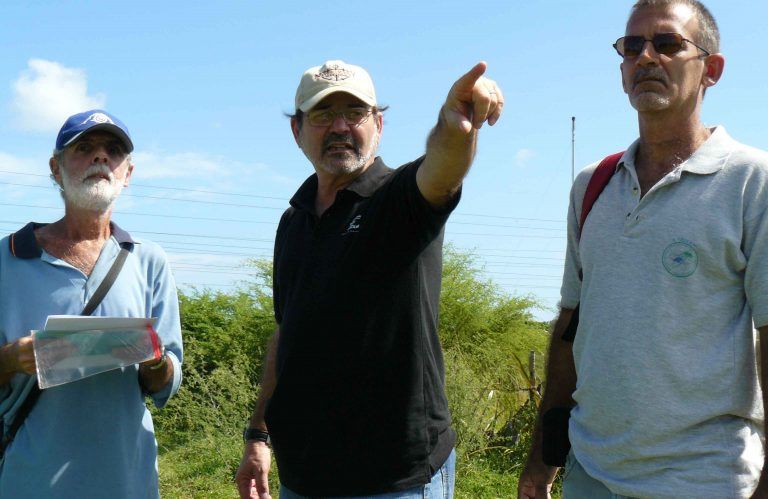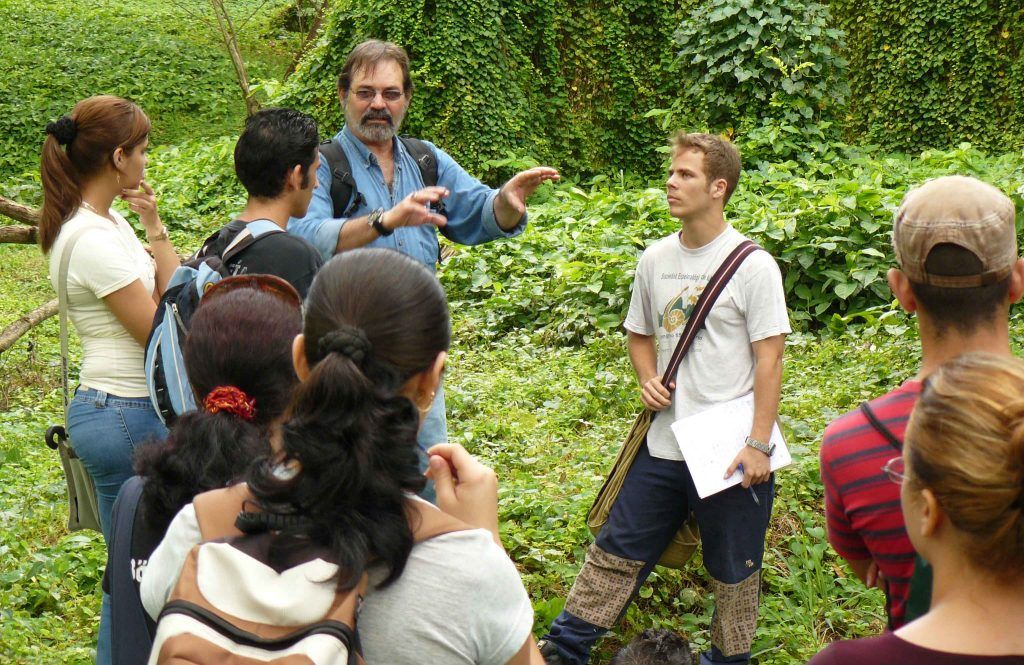Early this year, Leslie Fermín Molerio León, master in Science in Isotopic Hydrology, was elected Goodwill Ambassador of the Academy of Sciences of New York, a condition granted by that institution to only 200 scientists in the world (among 20,000 from 100 countries). In Cuba, Molerio León heads the Ministry of Science, Technology and Environment’s GAMMA Investments’ Department of Environmental Engineering and Hydric Resources.
Beyond the personal recognition, what importance do you give to your participation in this celebration of the prestigious New York institution?
It has been, above all, a recognition to geosciences in Cuba, a component of the Cuban scientific potential not very publicized and little known by the public in general, and whose successes frequently remain among us, the researchers of Earth sciences. Cuba has developed essential contributions to the knowledge of geology, geophysics, hydrology and the environment, not just of our country, but also of Latin America and the Caribbean. The bicentennial was celebrated on the same day as the anniversary of the foundation of the Academy of Sciences of New York, on January 29, 2017, but the festivities and activities had already started before with the annual gala (November 7, 2016) and will last for a year, a period in which there will be a campaign in the social media and exhibitions, videos, expeditions, symposiums and workshops will be held to make known among the population the achievements of modern science and technology. One of the programs in which we are involved is especially very important: the one called STEM: Science, Technology, Engineering and Mathematics, earmarked to encourage the interest of the common man in these fields and to favor the incorporation of young people to the study and development of these disciplines.

Your services record is very extensive and varied. Your contributions as coauthor of one of the researches on the paleoclimate of the Cuban quaternary in 2002 earned you the National Award of the Cuban Academy of Sciences. Since 1969 to date you have designed, advised and carried out explorations and researches in 43 countries, and you currently head, in Ecuador, a Hydrological Management project. Was hydrology always your principal interest?
In its broadest sense, yes. I have been very fortunate because I started working when I was barely 20 in the National Institute of Hydraulic Resources (INRH) with professionals that marked the development of hydrology and hydraulics in Cuba: Pedro Luis Dorticós, José Ramón Luege, Diosdado Pérez Franco and Andrés Díaz Arenas. I will never stop recognizing those personalities, some of which are no longer among us. I worked in the INRH for 30 years, in times of the impetuous development of Cuban hydraulics. It was a fundamental stage in my professional and human formation, a training period that would allow me to assume the direction of the Hydrogeological Service of Cuba.
My preferences are in the field of underground waters, in the exploration and development of aquifers; more specifically, in the field of the karstic cracked rocks, which leads to the field of speleology, a passion I developed since I was a child (almost 60 years ago) as a member of a Boy Scout squad. (When I joined the no longer existing Group of Scientific Explorations – in late 1962 – I was able to better channel that vocation that, since my years in the Marianao senior high, professor Aida Arroyo had already instilled in me.) Later I had the luck of living the first major stage of Cuban internationalist collaboration and, ever since I was very young, having been included in the groups that extended the Cuban presence and assistance to dozens of countries. My other preference is teaching, leading or backing the direction of diploma theses, masters and doctorates. But hydrology – surface and underground – is a single one and is an entity measured in amount, quality and opportunity. Linking research, flat out to the solution of the problems created by excess or lack of water is the perfect complement to integrate science and technology in a single product of social benefit.
And in Ecuador, which fields of your competence are you developing?
I am heading, together with another six Cuban specialists, a project geared at designing and implementing the system of Hydrological Management of the basins that flow into six reservoirs. Last year, a few days after the April 16 earthquake, I joined the works of assessing the effects of the quake in the hydraulic works, at the request of the Reconstruction Committee. Before that, in 2015, I directed a project for the assessment of the state of the quality of the waters in a reservoir and we designed the engineering measures to resolve the situation. All this under a country agreement between our Ministry of Science, Technology and Environment and Ecuador’s National Secretariat of Water, through its Public Water Enterprise. Parallel to this we carried out the procedures to register in Guayaquil a branch of GAMMA Investments, S.A.

The world is frightened in the face of the possibility that in a more or less immediate future we will be left without water. Are we on the threshold of a disaster?
There is sufficient water to meet the world’s growing needs, but it is necessary to change the way in which it is used, managed and shared. The world hydric crisis is a crisis of governance, much more than of available resources, as UNESCO points out. Naturally, climate change will aggravate the risks associated to variations in the distribution and availability of the hydric resources.
Having participated in the International Hydrological and International Geological Correlation programs, both of UNESCO, must have given you a joint vision of the future with respect to hydric resources, their management and perspectives….
Undoubtedly, as an old slogan of the World Meteorological Organization says “too much or too little water is the source of all the problems.” The hydric stress, for example, is a measure of how much the demand for water affects availability. Some 2.8 billion persons in the world are affected and this must be reversed or mitigated. The problem is characteristic for all the islands of the Caribbean, and Cuba is not exempt, on a regional scale, not on a country scale. In short, there is sufficient water to meet the world’s growing needs, but it is necessary to change the way in which it is used, managed and shared. The world hydric crisis is a crisis of governance, much more than of available resources, as UNESCO points out. Naturally, climate change will aggravate the risks associated to variations in the distribution and availability of the hydric resources. Something substantial should never be lost sight of: water is useful when it is available at the precise place and time, with the necessary amount and quality.









